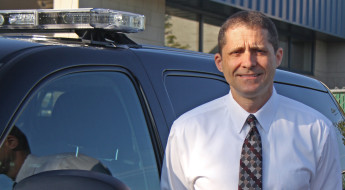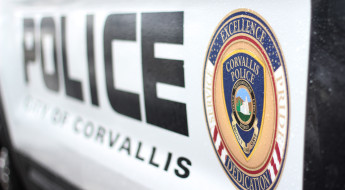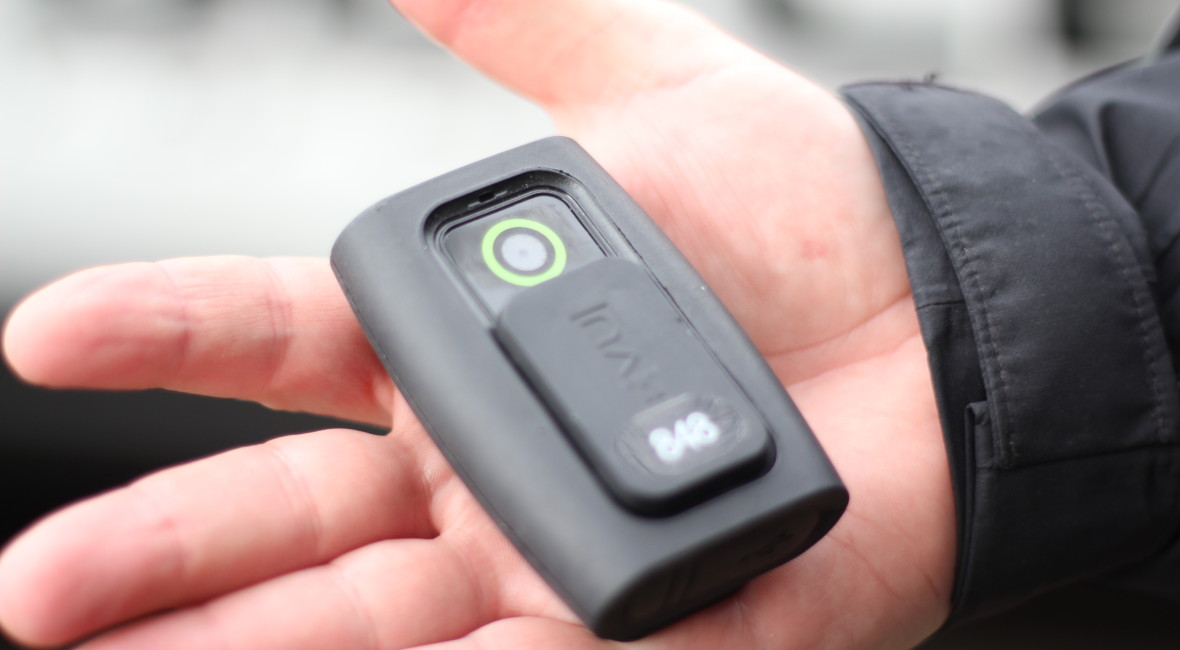
Photos by William Allison
It’s two o’clock in the morning and you’re on your way home from a finals study session at a friend’s house. As soon as you turn onto your dimly-lit street, your mirrors are flooded with strobing red and blue lights. You have a headlight out that you’ve been meaning to fix. When the officer approaches your car, he greets you by saying, “Hi there, just to let you know, I’m audio and video recording.” He then motions toward a box the size of a deck of cards on his chest – a body camera.
The Past
Prior to police vehicles and officers having cameras attached to them, it was a matter of hearsay on who was right and what happened in an altercation. Innocent citizens could be accused of crimes they didn’t commit, and good police officers could be labeled as ‘dirty cops’ by upset people and communities.
In the last few years, there have been several high profile officer-involved shooting cases throughout the United States. In 2014, Michael Brown was shot and killed by police in Ferguson, Mo. The same thing happened in 2015 to Walter Scott of Charleston, S.C. Sadly, there are countless other cases. In both mentioned instances, there were riots and public protests in which the community demanded answers. However, in both cases, there was little-to-no video evidence. This is where body cameras would have been helpful. As a result, police departments around the nation are adding body cameras to their officers’ uniforms to help with the issue at hand.
The Present
Because of the advancement of technology in cell phones and digital cameras, the use of force by police officers has become more public in recent years. In many states (including Oregon), there are now laws explicitly permitting citizens to record and/or photograph police actions, so long as they’re not interfering with the officers they’re taping. The problem with videos recorded by citizens is that they could be edited and they often exclude a crucial part of the situation or altercation. These two issues not only don’t help the police, but usually do the opposite, causing the community to be in an uproar over what they see as police brutality or something similar.
When people claim police brutality, racial profiling, and most importantly, officer-involved shootings, the public wants the officers to be held accountable. However, it can be difficult to prove who is in the right or wrong without evidence, more specifically, video evidence from the officer. This is where the body cameras come into play, providing a first-person view at what happened with video that cannot be altered.
To see how things work on a more local scale, we sat down with Lieutenant Cord Wood, a 17-year veteran of the Corvallis Police Department. Lt. Wood said that only two of his officers, the motorcycle traffic enforcement officers, wear body cameras on a day-to-day basis. CPD chose to equip these officers with bodycams because it was a better solution than mounting a camera to the motorcycles, especially because of the climate in the Northwest. In the 10 years that they’ve been in use, they’ve proven to be very useful.
“When you go to traffic trial, you can show the judge the video and he can see what the officer is talking about; he can see the violation,” Lt. Wood said. “So, the judge or jurors have an opportunity to see what it was that the officer saw.”
It’s not just the allegations against the public that the bodycams play a role in proving either. Lt. Wood went on to say that they also help, or disprove, allegations of misconduct against the officers.
“In our case, they’ve been very helpful in disproving allegations of misconduct,” he said.
Leo* is another local law enforcement officer who has a more recent criminal justice education. He shared some similar experiences as Lt. Wood, stating that he is aware of situations where bodycams have invalidated claims of misconduct by officers on his force. Leo also pointed out several things that were not brought up by Lt. Wood.
“Body cams are valuable in obtaining accurate statements from witnesses, victims, and suspects,” Leo said. “And they show exactly how events transpire in high-stress situations and accurately depict an officer’s actions.”
However, in other parts of the country where officers are not as trusted, the officers wearing body cameras seemed to have changed their behavior once putting on the devices. A study conducted by Justin Ready and Jacob Young in Mesa, Ariz. recently showed that officers who were wearing the bodycams were less likely to stop citizens to perform “stop-and-frisks” but at the same time, were more likely to initiate contacts.
Locally, very few departments use body cameras. According to a recent article published by the Albany Democrat-Herald, Lebanon Police Department is the only department that uses cameras on most officers regularly. For Corvallis Police Department, in addition to the traffic officers, they also occasionally use the bodycams on recruits so they can look back at their interactions. On the OSU campus, several public safety officers, as well as the Oregon State Police troopers use bodycams, though they’re among the few troopers around the state that do. Lt. Wood wasn’t aware of any other agencies within the local area that use bodycams.
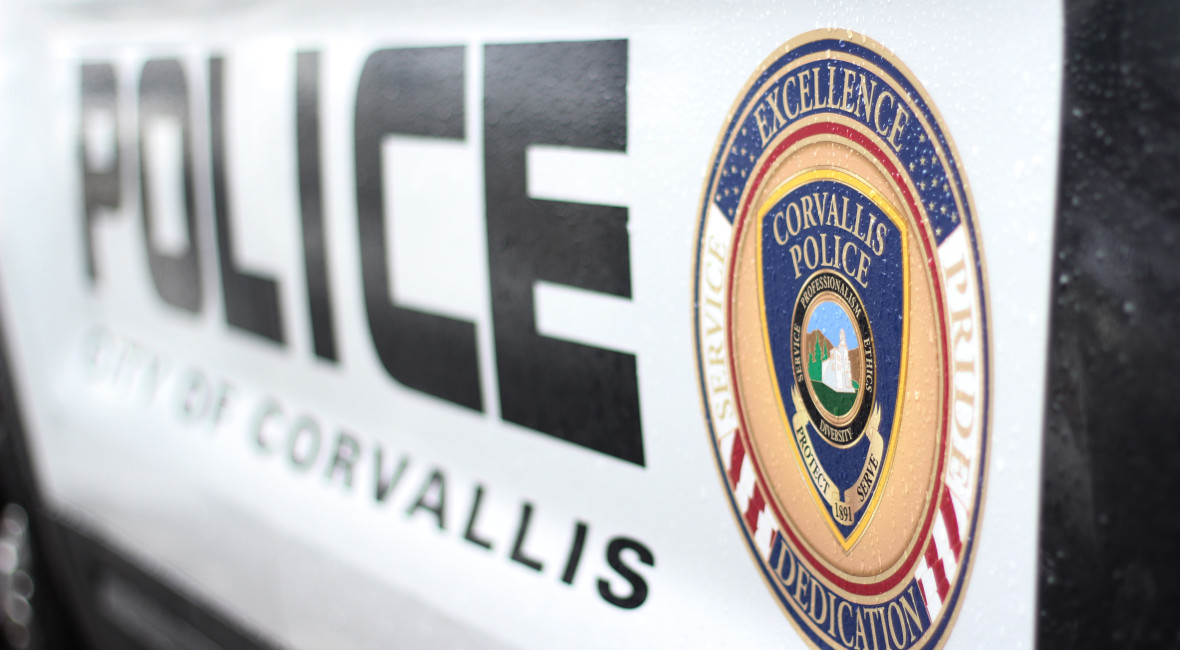
The Downsides, Costs, and Challenges
Body cameras themselves are not very expensive; the cost to operate them and store the data is a different story. Lt. Wood estimated that the cost to own and maintain a single camera and subsequent files costs somewhere in the range of $15,000. He said that there are some agencies smaller than CPD that are spending upwards of a quarter million dollars a year for their cameras, mainly in storage costs.
“The cost of the camera itself is small compared to the cost to store the data,” he said.
With a variety of models by several different companies, departments are faced with many different storage-related challenges. Some camera manufacturers don’t allow the users, or even administrators, to manage their own files, forcing them to use their proprietary cloud storage or software. This ends up being an expensive service since each month, more and more footage is being added to the cloud storage and the cost is per gigabyte, not a flat rate. On the other hand, some manufacturers don’t have an option for cloud storage, requiring the department to find or purchase enough server space to store the files securely for the amount of time that they need them. Then, the department is tasked with managing their files and finding an efficient way to sort, name, and store them.
While the point of the body cameras is to tell the story of what happened, they’re not perfect. They’re there to protect both the officers and those who they interact with, however, they don’t always see everything. Lt. Wood, a strong supporter of the cameras, was quick to point out their flaws, as did Leo.
“Of course there will always be technological issues,” Leo said. “Dead batteries, rain, [electrical] shorts, et cetera.”
Lt. Wood described a couple situations where the lens on the camera is essentially useless. The bodycams are mounted exactly where their name says: the body. This means that they’re obscured by the wearer’s arms if he has his gun or Taser drawn. Even if the camera’s view isn’t obstructed, the bodycams don’t follow the eyes of the officer, especially if he turns his head. Coupled with the fact that the field of view of bodycams aren’t the same as the human eye, that leaves a lot to be seen. Of course, there’s always the possibility of the camera getting knocked off of the uniform. In these situations, the judge would have to go off of audio alone, which can be misleading.
“I know some people think they will do anything and everything and that if you have an officer-involved shooting, all you have to do is look and it’s right there,” Lt. Wood said. “It’s not that simple.”
He went on to point out that price of the cameras and storage is just part of the cost. Because the cameras are used by the police, the video footage that is captured is a public document. If someone files a Freedom of Information Act request for the footage, the agency then has to redact information to protect the innocent, or in the case of a video, blur faces. Lt. Wood stated that CPD does not have the resources to do this themselves so they contract with a local business to perform this task whenever it’s necessary. While he did not state how much this costs CPD, he did imply that it wasn’t cheap. However, it’s necessary expense because sometimes, the cameras see too much.
Privacy Concerns
Many people are concerned about their privacy since the camera goes where the officer does. And they have every right to be. Although the intention isn’t to invade privacy, it may happen inadvertently.
Lt. Wood gave the example of a domestic violence call. If the officer enters the home and has his body camera recording, it’s capturing all of those involved, including any children in the home. If more fighting happens while the officer is within the home, that too will be on video. All of this is now a public document.
Sarah Wallace is an Albany resident with three children. She had a recent encounter with a police officer wearing a body camera when a neighbor made false accusations against one of her sons.
“The interaction was annoying because of the subject matter. He was arguing with me when I was telling him that [my son] did not do what he was accused of,” Wallace said. “Other than that, the bodycam really made no difference either way with the interaction.”
When it was pointed out that the video footage is now a public document, her attitude changed a bit. She said that it’s “pretty concerning.” Wallace still supports the use of body cameras despite an unpleasant interaction with the officer.
Public Perception
“I think that bodycams are a good thing. It allows for transparency for interactions with police officers for both parties,” Wallace went on to say. “It keeps police accountable and it provides unbiased evidence. I would feel safer if all officers wore them.”
Many sources that were found when conducting research for this article had strong support for body cameras with the only major concern being privacy. Even major organizations are expressing their support including the ACLU and The CATO Institute. According to a study by The CATO Institute, 92 percent of Americans support the use of bodycams by police, and 55 percent even went as far to say that they would be willing to pay higher taxes to fund the adoption of body cameras.
Although the majority of the American public seems to be in favor of body camera use, there will always be those who oppose it. With the privacy concern looming over them, that plays a bigger role than the protection it provides for some. Additionally, those who dislike police and make false accusations likely are not supportive of the bodycams as they can disprove their allegations.
The Future
House Bill 2757 was introduced in Oregon in 2015, aiming to set standards on how police departments handle body cameras on police, whether it’s when they’re used, how frequently they’re used, or how the files are managed. This is a good step forward because no matter the situation, department, or officer, there will be uniformity across the board, at least within the state.
From a professional standpoint, Lt. Wood summed up the future of body cameras nicely:
“I hope that as law enforcement makes that motion toward equipping the officers with body cameras that we’re thoughtful in our policies on retention, when and when not to record. I think we need to be thoughtful of the larger impacts, not just to our budgets, but our citizens’ privacy concerns. I think that we have to be thoughtful about the security of our data. I think that we need to do a good job educating the community on what they’re truly capable of and what they’re not capable of. I think that we have that obligation to do that outreach and education so we can move forward with that joint understanding between the officers and the community on what these are and what they can do.”
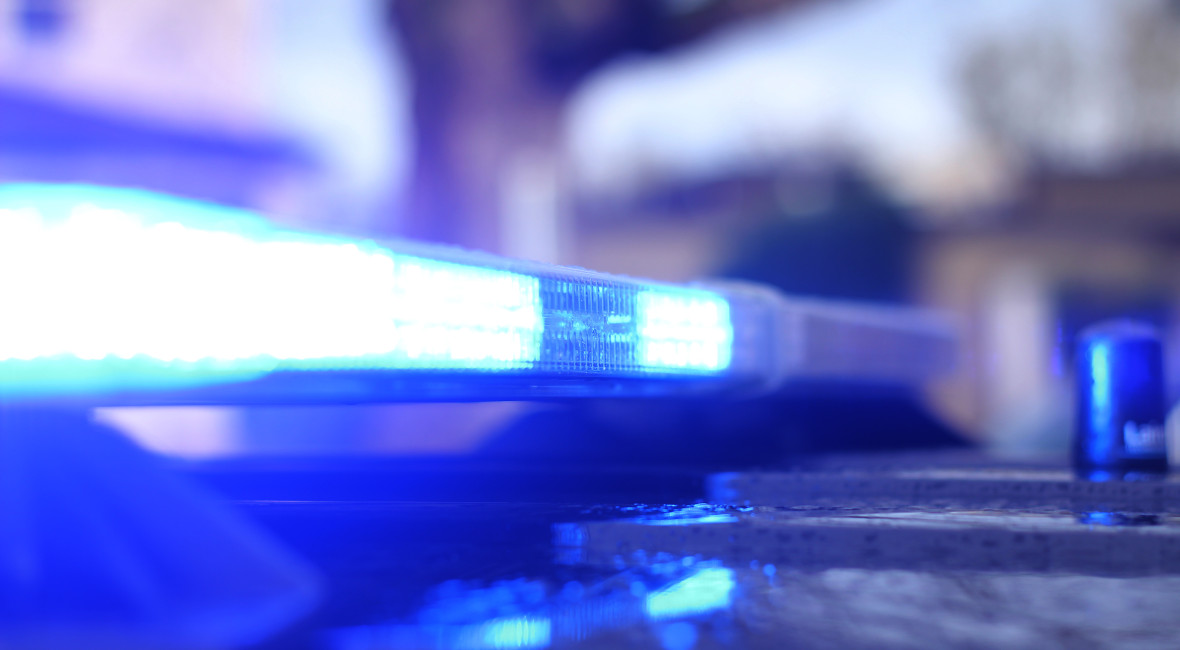
* Leo is a pseudonym to protect the identity of the officer. The officer was not authorized to speak without the permission of a supervisor.


